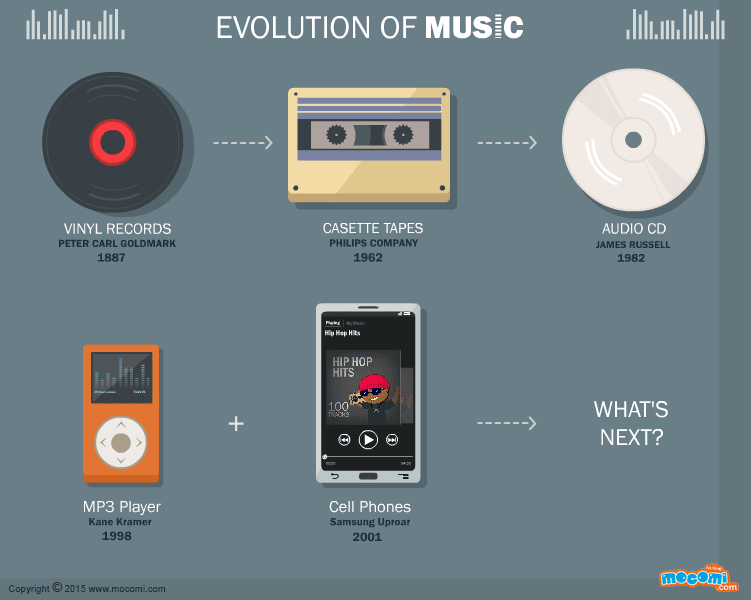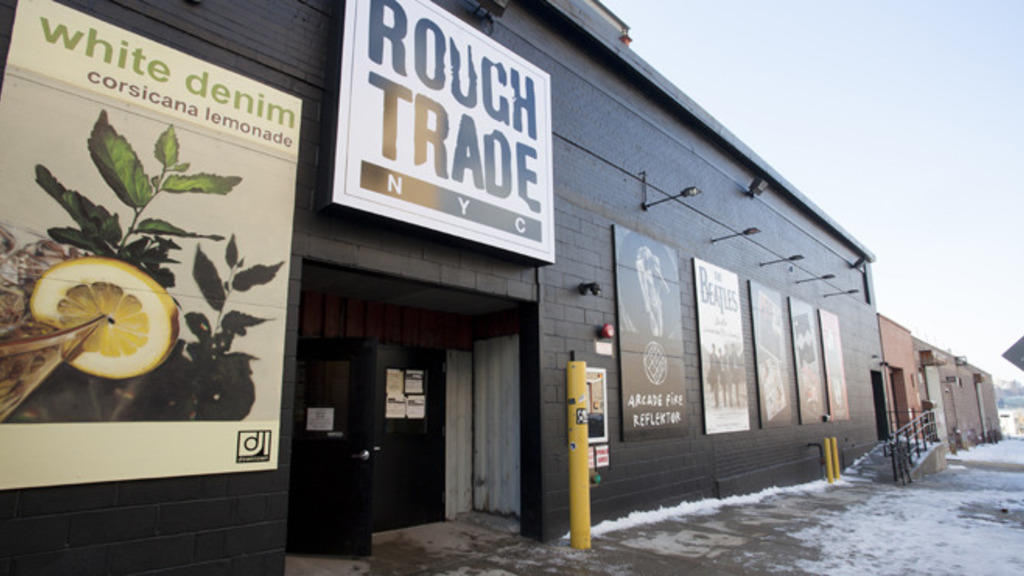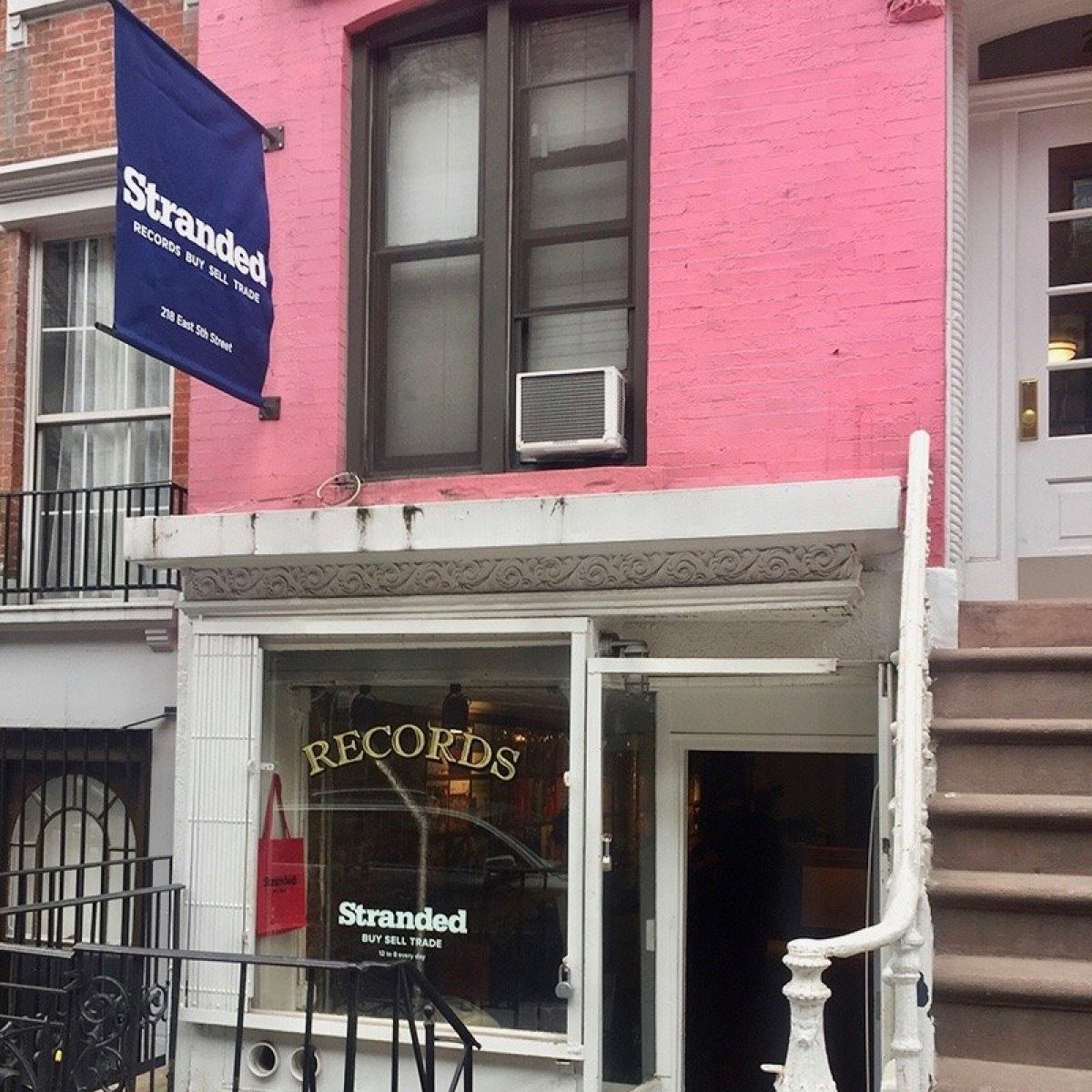What is a Vinyl?
Calling records vinyl is much like calling a fence wood or a surfboard fiberglass. Vinyl is the material the record is made of. And before vinyl was shellac
and before shellac were gigantic cylinders made of zinc and glass.
Reeling back to what is vinyl, vinyl is a synthetic plastic called polyvinyl chloride. It is made from ethylene (crude oil) and chlorine,
and its creation was part of the plastics boom in the early 1900s. Material scientists were constantly innovating with these synthetic polymers
that seemed to outperform wood, stone, leather, ceramic, metal, and glass in various respects.
Fun Fact
Depending on the creation process, polyvinyl chloride (or PVC) can be turned into PVC piping or vinyl records. That does not mean you should start replacing your piping with your old vinyl collection.
Though invented decades prior, vinyl records were not popularized until Peter Goldmark came around in 1948
The End of Vinyl Records (or is it?)
Once the Walkman was invented, it felt like all bets were off.
- Portable CD Players:
In the 80s, portable CD players became the next Walkman. CDs were a more dynamic, compact discs. Not only could they hold more music, but you could create your own mixtapes without recording it by holding a microphone up to a speaker
- iPod:
Then in 2001, Apple launched the iPod, and all other music listening devices would be lost to the tendrils of history. Once you offer a consumer the power to play their own music, in any order, create custom playlists on the fly, there was no going back.
- Streaming services:
Of course, the rest is history. With Napster, then came iTunes and streaming services that allowed consumers to listen to any song at any time. Suddenly, going out and buying music became a retro activity.
2008: The Vinyl Comeback
As music fans embraced the future of free digital music, there was a small minority who were pushing back. In 2008, for the first time since 1984, the sales of LPs rose. And it was not a minor fluctuation; vinyl sales increased by 89%.
Since then, sales have steadily risen over the years, with an estimated 9.7 million vinyl record sales in 2018 alone.
Reasons for Resurgence
It is hard to say what accounts for this meteoric resurgence of vinyl records. Some claim that vinyl records sound better and many value their personal record collection. But in an age where digital sounds are perfected down to the very waveform, could this really be true?
This audiophile suspects it is in the process of perfection that the flaw is seen.
If you will allow some musings of the inner soul humans are imperfect. And in our imperfection, vinyl stands as a testament to the beauty that comes from an imperfect sound. Digital music is wonderful and has spurred new genres and methods of music creation. Nothing can take away from that. But perhaps the two can live in harmony much in the same way 33s and 45s held different areas of the market throughout the 50s, 60s, and 70s, digital and vinyl have their respective places in music lovers ears.
Analog vs Digital: Why Choose?
So what is the difference in quality between analog and digital? The idea between digital recording is that our ears and brains technically can not determine the spaces between the digital values, just like our brains interpret film as continuous motion. However, to many people, analog sound tends to be warmer, has more texture and is thought to capture a truer representation of the actual sound. Digital is felt to be somewhat cold, technical and perhaps lacking in analogs nuance.
However digital is much cheaper. Recording an album with analog technology can require a whole studio full of equipment, but with digital recording technology, it is possible to record a whole album in a bedroom on a laptop. And whereas analog technology can wear out or be damaged, digital media can last for an indefinite length of time.
Today many recording artists, both major and independent, record using a mixture of digital and analog techniques. While analog audio does give warmth and a truer sound quality, digital is cheaper to work with and offers more control over the finished product.
Most up and coming producers and musicians live in a hybrid liminal space. They take the best from each approach and apply it to the specifics of the genre they create. Some genres of music also are weighted in one direction or another. Most punk and indie rock bands use many more analog techniques than high hop or electro pop or EDM acts. So, if you are debating on which approach is correct for you, a large amount of that info could come from what the people in your specific niche are doing.
Digital
Streaming music revenues grew 12% to $4.8 billion in the first half of 2020. This category includes revenues from subscription services (such as paid versions of Spotify, Apple Music, Amazon, and others), digital and customized radio services, including those revenues distributed by SoundExchange (like Pandora, SiriusXM, and other Internet radio),and ad-supported on-demand streaming services (such as YouTube, Vevo, and ad-supported Spotify).
Paid subscription revenues grew 14% to $3.8 billion, and further increased their share as the largest contributo, accounting for 67% of total revenues for 1H 2020. They also
accounted for 79% of total streaming
revenues.
With the rise of technology came that digital music explosion. Making it easier and more accessible for people around the world. With the highly increasing popularity and relevance of the internet in the late 90s and early 2000s, music was being supplied in a different and new way. Music is now able to be downloaded through the internet using what we call an MP3 file. This is the next evolution of attaining music and the start of a new era in the early phase of digitalization. No longer do people need to buy CDs and a CD player but are now able to download music for free through the internet via MP3.
Analog
Analogue music had been around for over centuries, as long as the invention of recorded music or lived performed music was first established as far as we are concerned. Analogue music could be categorized in such a diverse way, starting from live musical performance, up to studio musical recording. The analogue of the concept of analogue music itself is derived from the sound of solo musical instruments that are harmonized together with different other musical instruments and voices that then the continuous harmony would be established into the music we know of.
On the face of it, records are just another consumer product, developed to distribute and sell music to the masses. But the record pressing process catapulted audio just as the printing press did the written word. Vinyl does therefore hold something of a cultural and historical significance for music lovers. The iconic status and longevity of the record as a music format cannot be ignored.
Does it Matter
Format alone does not ensure quality: you could listen to the most expertly crafted vinyl record in the world, but it would not matter if you played it through a portable record player with built-in speakers. Likewise, you could have access to uncompressed studio master FLAC files, but it would not mean much if you were listening over your laptop speakers, or via a Bluetooth connection.

What Matters Most is Supporting your Favorite Artists.
Mainstream Attraction

Some Quick histroy
The first gramophone record was introduced in 1931 in New York. Long Play or long playing is a term for a type of turntable (analog soundtrack or audio format that has 33 rpm) from a vinyl record that rotates on a turntable at a speed of 33 rpm. American record company Columbia Records is back in 1948 popularized this vinyl record. Since then, vinyl has become the standard for the record industry around the world. Until then, the standard format of gramophone records (78 rmp / or rpm) allowed only 3 to 5 minutes of content per page. Long play allowed for 20 minutes of content on each side. Thus, it is possible to perform classical music (operas, symphonies, etc.) on gramophone records, and to release albums of popular music and other musical genres on one record. The popularity of LP records has not diminished with the introduction of single records at 45 rpm. In the 1970s with the advent of audio cassettes, Long Play records were threatened.
Vinyl is not just coming back , It is here to stay.
Vinyl records nearly doubled in volume last year, from 27.5 million albums in 2020 to 41.7 million in 2021, according to MRC Data 2021 U.S. Year-End Report. It marks the 16th consecutive year of growing vinyl sales in the United States.Increased demand has put a strain on record store inventory and record processing plants throughout the country. And when the pandemic hit, it only exacerbated the problem.One of the tough things about being in a record store or shopping with records is that there is a huge backlog right now at the pressing plants because there is not enough plants to make the actual records,said Eric Woodard, owner of Scratch N Spin, an independent entertainment store in West Columbia.Since new records are more costly, indie vinyl stores actually make more profit on used records, though they must carry both in order to appeal to customers.
The way most people listen to music has changed. You hear music when you are in the coffee shop, in the car, in the gym, just walking down the street sometimes, we hear it everywhere, says Scott Hagen, CEO of Victrola. In every store we go into we hear it, and we are consuming more music than ever before, but not in the same way. The ability to stop and sit and listen to an album from beginning to end, that is something that always has been and always will be relevant.
Streaming services can offer whatever you want, when you want it, but many feel that they can not compete with the authentic musical experience records offer. In an age where most people spend hours on their phone and computer every day, records are detached from technology.
1.Rough Trade NYC, Midtown

Rough Trade NYC might be one of the most recognizable record store names in NYC (and even the entire country !), and their location in Rockefeller Center is a heaven for vinyl and music lovers.From live performances to album signings, Rough Trade brings in huge artists to create intimate experiences for music fans. Check out their website to see what events are coming up and to browse their vinyl inventory.
Where: 30 Rockefeller Plaza 6th Avenue
2. Human Head Records, East Williamsburg

From first-timers to seasoned audiophiles, Human Head Records caters to all customeres needs and is one of our favorite record stores in NYC. With over 5,000 pieces of new and used records to pick from. If only you needed another reason stop by, you may find a hidden gem!
Where: 289 Meserole St, Brooklyn
3.Stranded Records NYC, East Village

Known as one of the best of the record stores in NYC, Stranded Records certainly would not leave you stranded for choice. With wall-to-wall options of both New Arrivals and Best Selling records, looking through records here is made simple thanks to their organization. Their online catalog is also a perfect place to start, which allows you to check out their inventory before you head to the store. What sets Stranded Records apart from the crowd is their access to international records you likely would not find anywhere else.
Where:218 E 5th St
4. Vinyl Fantasy, Bushwick

a vinyl and comic book store combo you did not know you needed. Shop everything from records across all genres all the way to music magazines and of course, comic books. We love the idea of snagging a new vinyl and graphic novel in the same outing, and having some me-time! They also offer exclusive items as well as fun music accessories like cassette tapes, stickers, postcards, and so much more!
Where:194 Knickerbocker Ave





